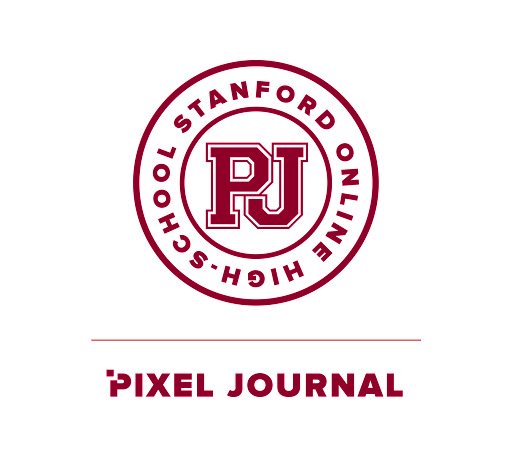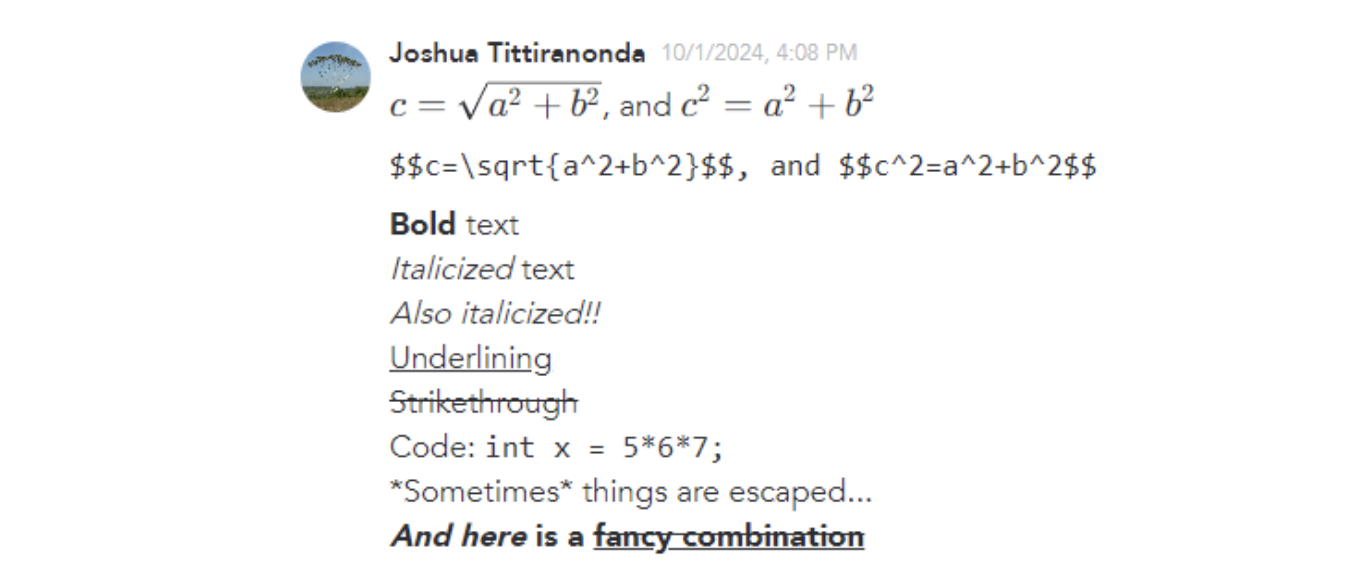Pronto++: Powering Up Pronto
Last year, OHS implemented its new messaging platform: Pronto. Since OHS has moved onto Pronto, OHS students have already begun innovatively improving the app. Recently, juniors Michael Sha (‘26), Josh Tittiranonda (‘26), and Gene Yang (‘26) released a Chrome extension known as Pronto++. Pronto++ intends to refine students’ quality-of-life, with features such as markdown and mathematical notation. Initially, the team was motivated by students’ concern about the lack of nickname functionality. With an idea in mind, Sha approached OHS’s tech team: proposing implementation of nicknames and pronoun tags. Once it was revealed that Pronto already had this feature, the team pivoted—this time, they focused on peer tutoring systems, such as communicating math equations.
Specifically, Pronto++ introduces KaTeX rendering and markdown support. As Diem Nguyen, who works on the OHS tech team describes, “The KaTeX rendering feature allows users to write and display complex mathematical equations and symbols directly within their chat messages, making it particularly valuable in educational contexts where precise mathematical notation is essential. Additionally, markdown support provides users with text formatting capabilities such as bold, italics, strikethrough, underline, and code blocks, significantly enhancing message readability and structure.” Since Pronto++ operates entirely on the client side, rendering and formatting is processed locally—an advantage which ensures a “lightweight and efficient user experience without the need for back-end server interactions.”
Throughout the design process, there were two main hurdles for the students: sustaining momentum and usability. The project started slowly, with students preparing for finals and AP exams. As such, Sha recounts, “We lost quite a lot of momentum during the summer, so reasonably compelling everyone to keep working on something, even when it can get boring at times, was probably the most difficult part.” Moreover, as Sha puts it, “We wanted a project which isn’t just made, then thrown to the waste where nobody ever uses it again.” Thus, the team chose to publish their project as a Chrome extension—a decision which came with “a couple more stringent requirements on quality, like being able to work on different browsers, OSes, etc.” Altogether, the bulk of the team’s time was spent fixing multiple iterations of the project. Since the script operates on the client side, Nguyen elaborates that bugs “demanded meticulous attention to detail and encouraged close collaboration among the student developers.” In addition, Nguyen recalls the team had to “adapt our approach from earlier versions with server-side components to focus on a streamlined front-end experience.”
For Sha, his favorite feature is math notation. He excitedly explains, “I’m a TA for calculus, and I always thought communication in math was really nasty. I really like just having a cleaner implementation of math.” During the design process, Nguyen’s favorite aspect has been “witnessing the growth of the students throughout the development process.” As a mentor, she notes the students’ “enthusiasm and innovative ideas have been a constant source of inspiration.”
With the help of Nguyen, the students were able to refine their innovative ideas into a “polished final product.” Whether it be assisting them in “debugging their code, guiding them through the complexities of submitting the extension to the Chrome Web store, and sharing best practices to enhance user experience,” Nguyen has actively contributed to the project. Nguyen aims to “empower the students with insights and support,” which is a collaborative approach that “reflects our transition from earlier iterations to a refined, user-centric application.”
In the future, the team plans to continue developing Pronto++ further. “One of the things we might be interested in a V2 was cosmetic changes to Pronto,” Sha says, “it’s not the prettiest. So, customizable themes or different color packs would be a topic for a Pronto++ V2 release.” Additionally, the team hopes that their project will impact students beyond OHS. Sha clarifies, “We want it to be utilized by everyone who uses Pronto in the spirit of universality, and being open to all.”
Reflecting upon their experiences, Sha describes the process in one word: cheesy. He laughingly explains, “It was full of a few holes at times, and it’s also a little bit stinky. when it’s moving slow, there’s nothing there, it’s like Swiss cheese. But when stuff is going on, it’s still kind of stinky reading through long email chains. Overall, I’m still really happy we did it though. I love cheese; I named my cat after cheese, so no complaints about that.” For Nguyen, “Collaborating, sharing knowledge, and seeing their [the team’s] hard work translate into a tangible product has been immensely rewarding.”
Congratulations to the Pronto++ and OHS tech team for their inspirational project! Nguyen speaks for all of us with this concluding statement: “I am incredibly proud of the dedication demonstrated by our student team and excited about how Pronto++ will further enrich the OHS community's communication experience. Together, we are fostering a more connected and resourceful academic environment.”



